Labour and Delivery Preparation
If you’re expecting a baby, chances are you’ve been searching for labour and delivery preparation. What does labour actually feel like? Should you opt for a natural birth or an epidural? How can you prepare for the big day? You’re not alone—many parents-to-be want to feel confident and ready when labour starts.
This guide covers everything you need to know about labour and delivery preparation, from natural pain relief to hospital bag essentials. Whether you’re planning a water birth, a medicated birth, or just want to understand your options, this will help you feel informed and empowered.
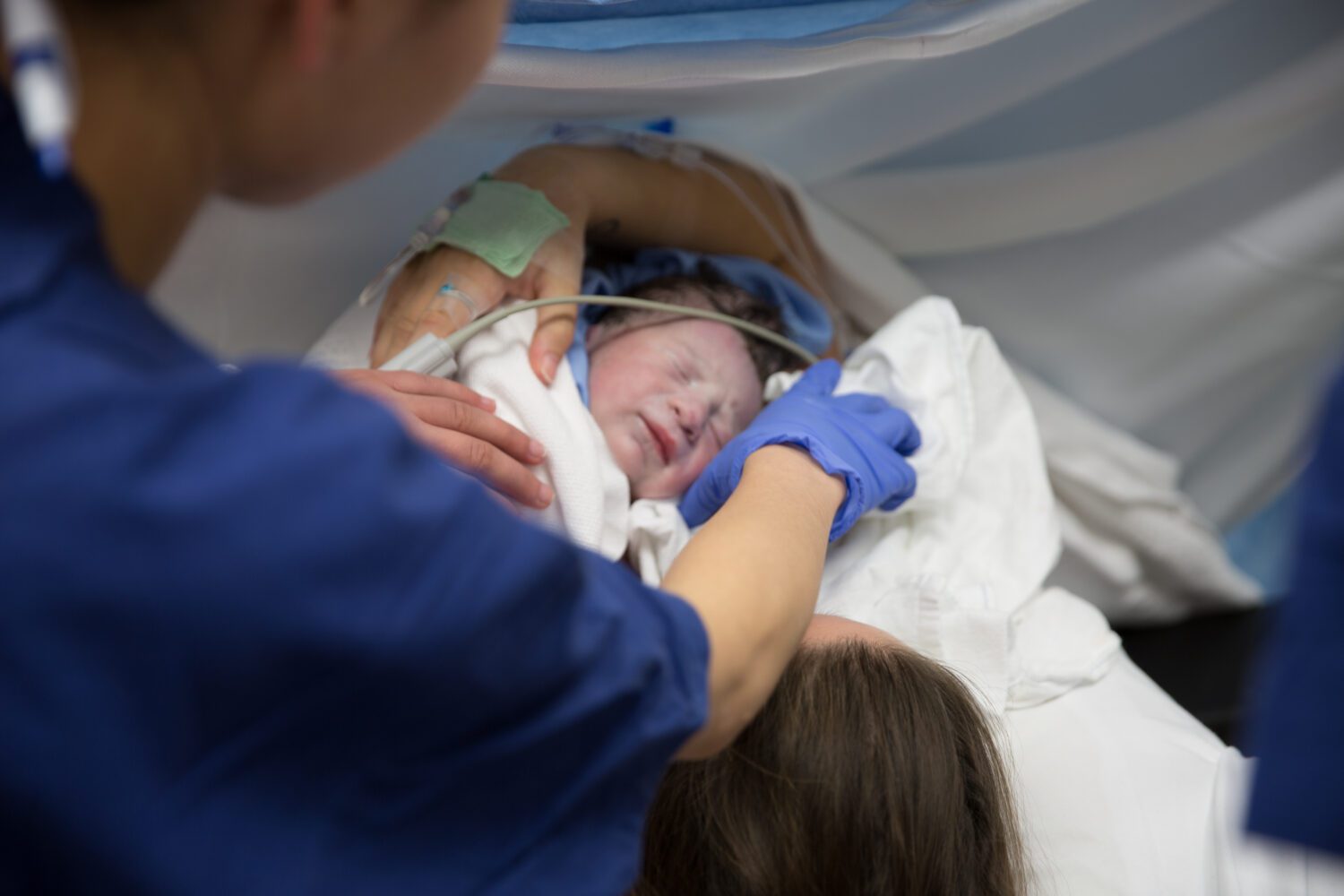
Things You Can Do During Pregnancy to Make Labour Easier
One of the best ways to prepare for a smoother labour is to start while you’re still pregnant. Here are some practical steps that can help with labour and delivery preparation.
Exercise and Movement
Staying active during pregnancy can improve stamina and help with an easier birth. Safe exercises include:
- Walking – Keeps you fit and encourages baby into the right position.
- Prenatal yoga – Improves flexibility and teaches breathing techniques for labour.
- Pelvic floor exercises (Kegels) – Strengthens muscles for pushing and postpartum recovery.
- Squats – Helps open the pelvis and strengthens legs for labour.
Optimal Fetal Positioning
Encouraging baby into a good position before birth can make labour shorter and less painful. Try:
- Sitting upright instead of slouching
- Spending time on hands and knees (cat-cow yoga pose)
- Using a birthing ball to sit and gently bounce
For more positioning tips, visit Spinning Babies.
Diet and Hydration
What you eat during pregnancy plays a role in your energy levels for labour.
- Stay hydrated – Drink plenty of water to help with amniotic fluid levels and circulation.
- Eat protein-rich foods – Helps maintain energy levels.
- Include dates in your diet – Some studies suggest eating dates in the last weeks of pregnancy may help with a shorter first stage of labour.
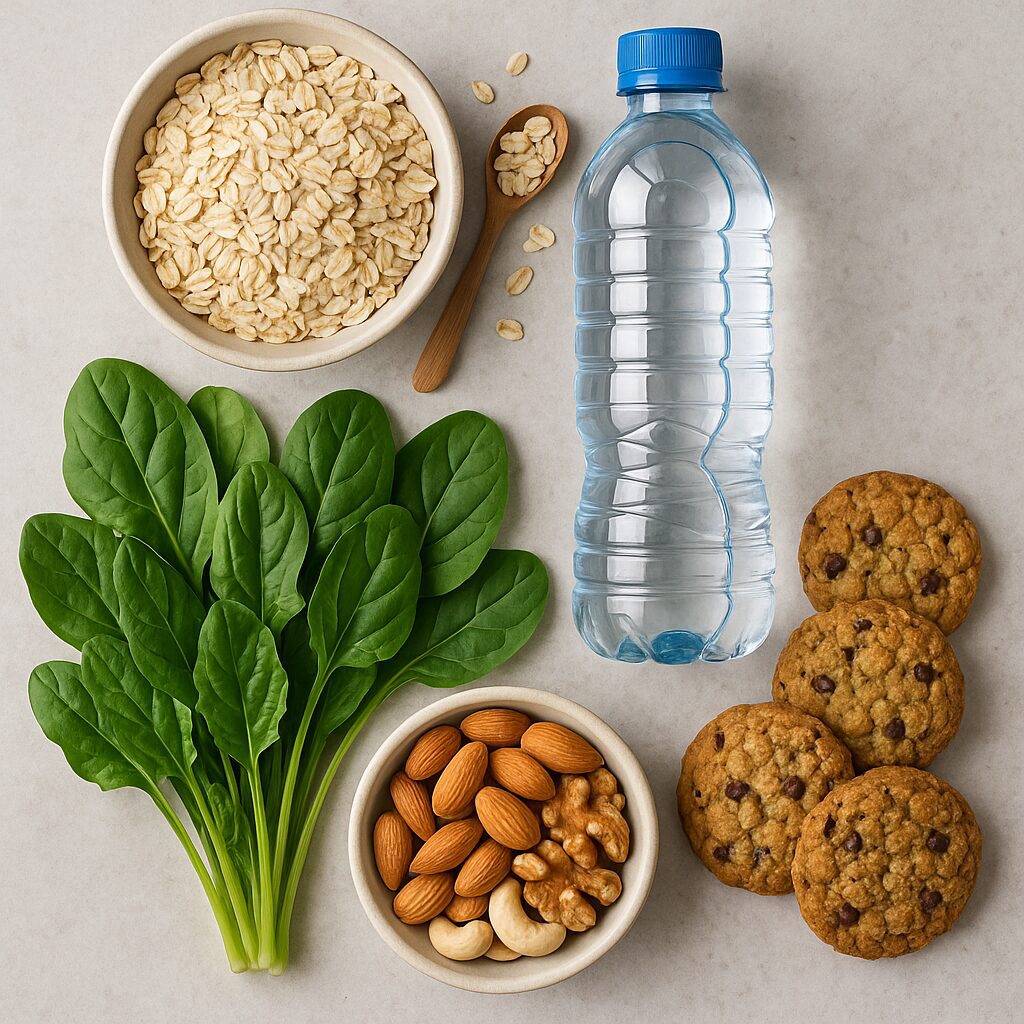
Perineal Massage
From around 34 weeks, massaging the perineum (the area between the vagina and anus) can help reduce the risk of tearing during birth. Use a natural oil like sweet almond oil and gently stretch the area for a few minutes each day.
Practice Relaxation Techniques
- Hypnobirthing – Helps reduce fear and manage pain.
- Breathing exercises – Deep breathing can help you stay calm during contractions.
- Guided meditation – Lowers stress levels and encourages a positive mindset for birth.
These small steps can make a big difference when it comes to labour and delivery preparation.
Signs That Labour is Starting
One of the biggest questions in labour and delivery preparation is: how do you know when it’s time? Here are some common signs that labour is approaching.
- Lightening – Baby drops lower into your pelvis, making breathing easier but increasing pelvic pressure.
- Water breaking – This can be a sudden gush or a slow trickle. Call your hospital or midwife if it happens.
- Contractions – Unlike Braxton Hicks, real contractions become stronger, longer, and closer together.
- The urge to go to the toilet – A strong pressure sensation can indicate baby is moving down.
If you’re unsure whether labour has started, call your midwife or hospital for guidance.
Pain Relief Options in Labour
Pain during labour is different for everyone. Some women find breathing techniques and movement enough, while others prefer medical pain relief. Here are the options available.
Natural Pain Relief
- Breathing techniques such as hypnobirthing
- Warm showers, baths, or water birth
- Massage or acupressure
- Changing positions and moving around
Medical Pain Relief
- Gas and air (nitrous oxide) – Takes the edge off but doesn’t remove pain completely.
- Pethidine or morphine – A stronger painkiller that can make you drowsy.
- Epidural – Provides full pain relief from the waist down but limits movement.
Your birth plan should reflect your preferences, but it’s important to stay flexible—labour can be unpredictable.
What Happens During Labour?
Labour happens in three stages, and understanding each one is a key part of labour and delivery preparation.
First Stage – Early and Active Labour
- Early labour: Mild contractions, cervix dilates to 4 cm.
- Active labour: Stronger contractions, dilation progresses to 10 cm.
Second Stage – Pushing and Birth
- Baby moves down the birth canal, and you push with contractions.
- You may feel a burning sensation as baby’s head crowns.
- Baby is born.
Third Stage – Delivery of Placenta
- The placenta is delivered after baby arrives. You may not even notice it happening.
Knowing what to expect can help reduce fear and make the experience feel more manageable.
Your Newborn’s First Bath in Hospital

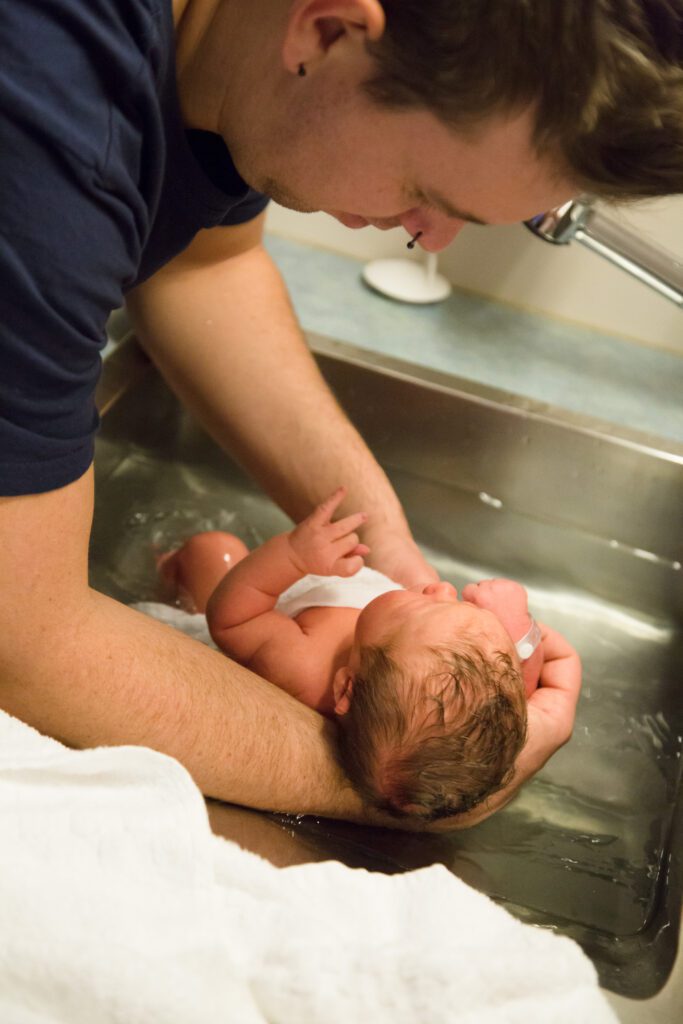
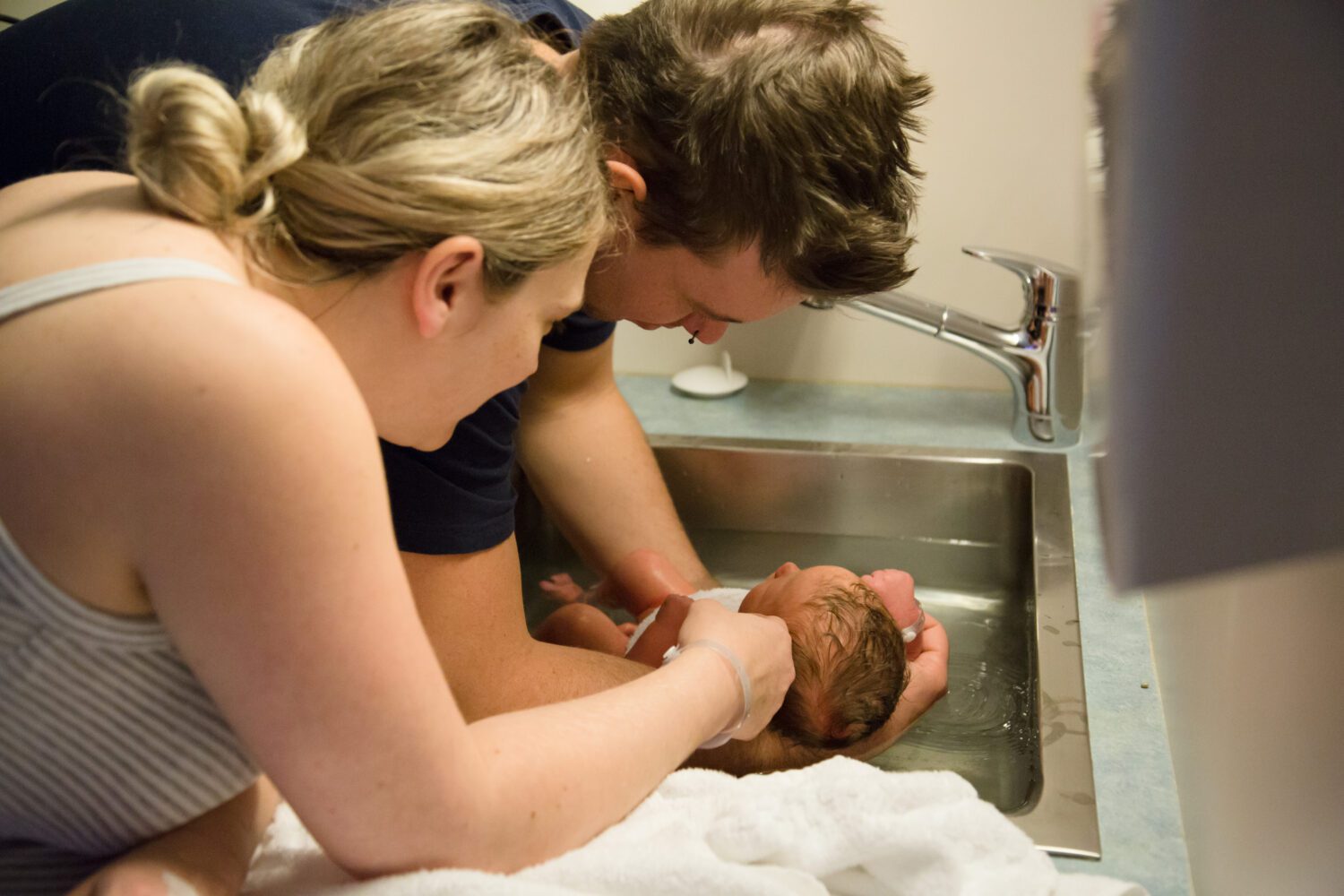
Your baby’s first bath in hospital is usually a gentle wipe-down rather than a full soak. It’s often delayed for 24–48 hours after birth to help with bonding, temperature regulation, and protecting their natural skin barrier (vernix).
Wiping with a Face Washer
If baby isn’t ready for a full bath, midwives may show you how to give a simple wipe-down using a face washer.
Here’s how:
- Use warm water only – no soap needed.
- Face first – Wipe eyes from inner to outer corner, using a clean part of the washer for each area.
- Neck and creases – Gently wipe under the chin, around the ears and folds.
- Nappy area last – Always clean bottom last with a fresh corner.
Dry your baby gently and dress them warmly afterwards. You can cuddle up for some lovely bonding time straight after.
A Few Quick Tips:
- Babies may cry – it’s all new to them.
- Keep the room warm and calm.
- Bathing 2–3 times a week is enough at first.
Hospital Bag Essentials
A well-packed hospital bag is a small but important part of labour and delivery preparation. Here’s what to bring.
For Mum
- Comfortable clothes for labour and after birth
- Maternity pads and toiletries
- Phone charger
- Snacks and water bottle
For Baby
- Nappies and wipes
- Onesies and wraps
- A hat for warmth
- An approved car seat, installed and ready to go
For Labour
- Bluetooth speaker and charger
- Lip balm
- fake candles (Trust me it helps with the relaxation part
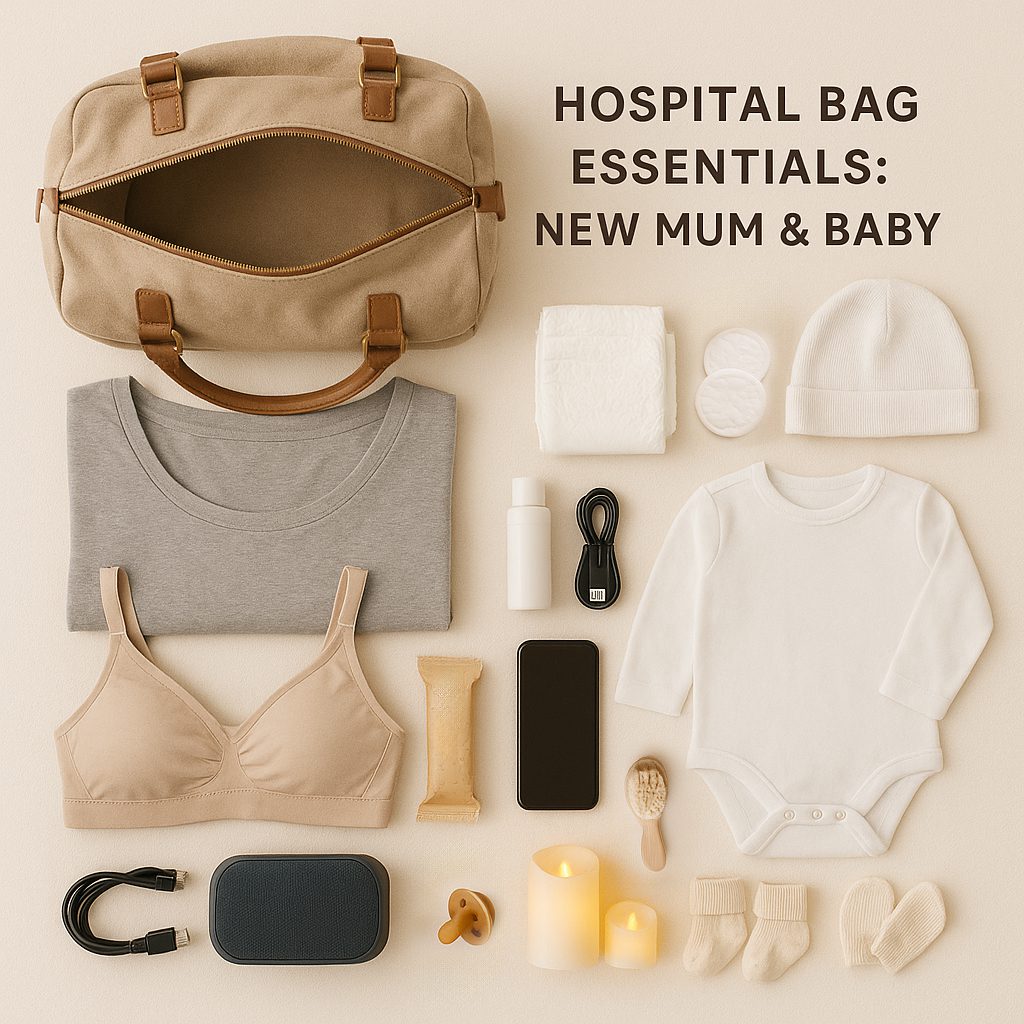
When to Go to Hospital
It’s time to head to the hospital when:
- Contractions are five minutes apart, lasting 60 seconds, for at least an hour.
- Your waters break, especially if the fluid is green or brown.
- You experience heavy bleeding or reduced baby movements.
If you’re unsure, call your hospital or midwife for advice.
No matter how much you plan, labour is unpredictable. The best labour and delivery preparation includes understanding your options, staying flexible, and trusting your body.
And don’t forget—these first moments with your baby are worth capturing. Book a newborn photography session with Aurora Joy Photography to create memories you’ll treasure forever.
Leave a Reply
Emma Baker
Hi there! I'm Emm, a Romsey-based photographer capturing smiles and creating cherished memories. As a mum to Rori and Kody and partner to Josh, I love adventure—riding bikes, savoring coffee, and embracing life's journey. With a background in teaching, I found my true passion in photography over a decade ago. I founded Aurora Joy Photography to celebrate every client's unique journey with warmth and enthusiasm.
Emma Baker
May 13, 2025
SHARE TO:
Pinterest
Facebook
COMMENTS
+
-